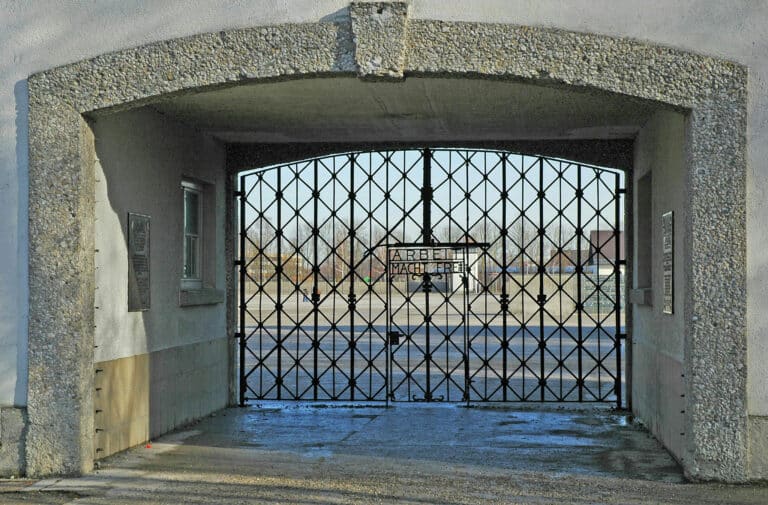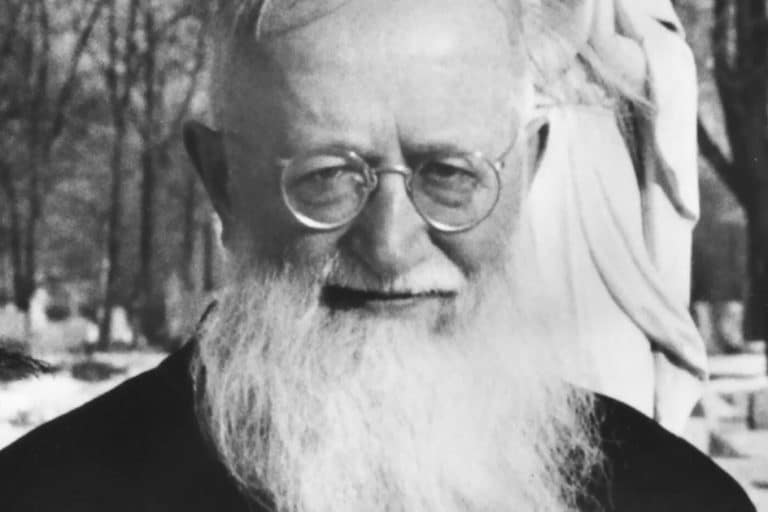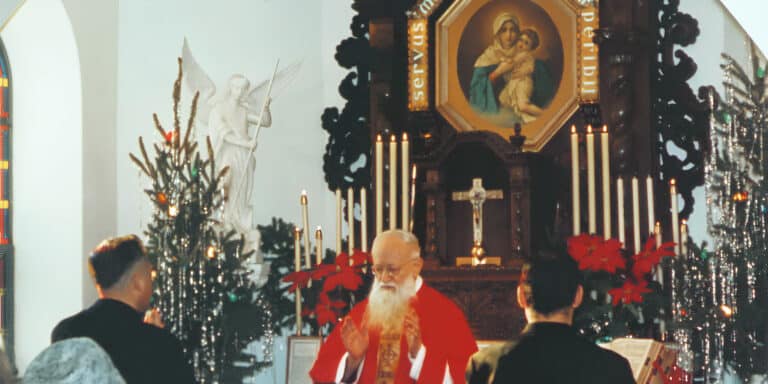For years it has been the practice for the Schoenstatt Family to gather in the Father Kentenich House on Father Joseph Kentenich’s name day and birthday to follow in his footsteps and to get to know him better. After a long break, it was a joy for many to be able to continue this tradition and that now Sister M. Pia Buesge shares rather unknown details of Father Kentenich’s life, as she does so well.
Sister Gisela-Maria Mues, director of the Father Kentenich House, which is located on Mount Schoenstatt, just steps away from the Holy Trinity Church, welcomed all those who came to celebrate Father Kentenich’s birthday. Among them were guests from Engers, which is only 10 kilometers from Schoenstatt, on the banks of the Rhine River. It is the place that particularly interests us today because Father Kentenich lived there 100 years ago.
Following in the footsteps of Father Kentenich in Engers
In the autumn of 1920, Father Kentenich moved his residence from Schoenstatt to Engers. The reasons for his decision are varied: After the sudden death of the Pallottine Father who was working as chaplain at St. Augustine’s Hospital in Engers, Father Kentenich took over this task. There he was able to convalesce a little and, at the same time, paved the way for his successor as spiritual director in Schoenstatt to begin his task.
We have a treasure, a saint
The Sister who was the doorkeeper at St. Augustine’s at the time later told the following story about Father Kentenich’s arrival at the hospital: A Pallottine youth accompanied him to his room and then remarked to the nurse: “You don’t know what a treasure we have brought to your house. He is a saint.”
It is surprising that there is abundant written material from the four years that Father Kentenich lived in Engers. We owe this mainly to the research carried out by Sister M. Magda Kessler, a deceased Sister of Mary who was born in Engers. Now Sister M. Pia draws our attention to three focal points of Father Kentenich’s work in Engers, illustrated with numerous photos:
1. Parish priest at the hospital in Engers
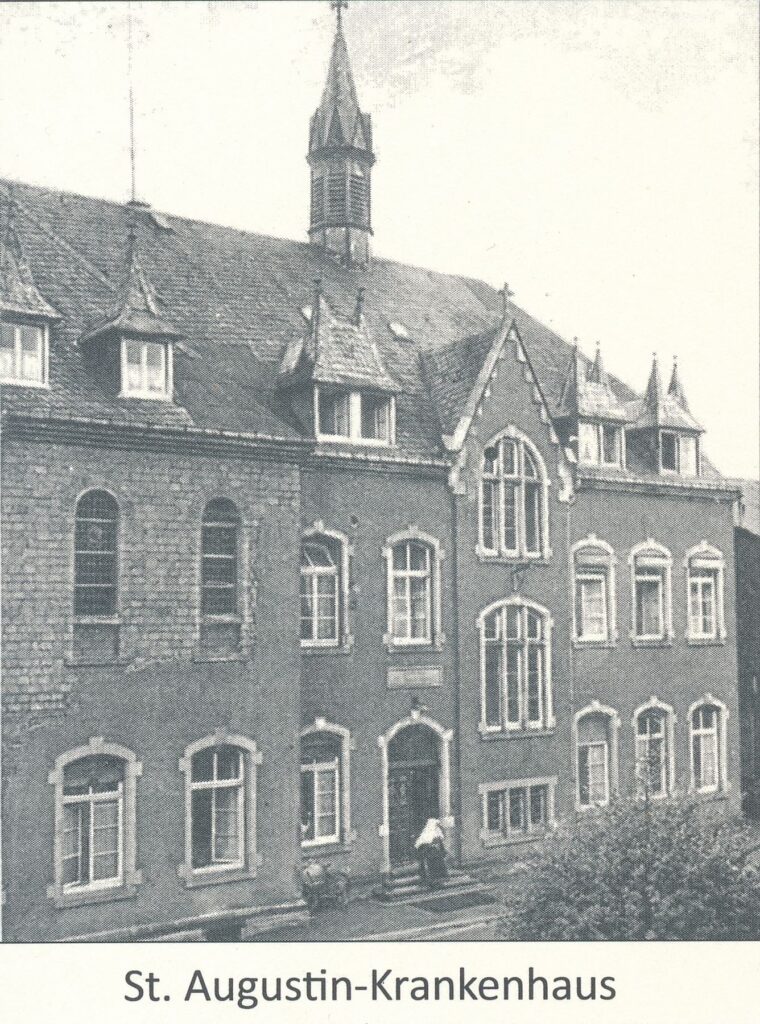
Sister M. Erika Kölzer, who now lives in Borken, also comes from Engers. She shared with the audience an impressive testimony about Father Kentenich’s work as a hospital chaplain, which she learned about from her grandmother when she was a teenager. Her grandmother told her, among other things:
“In the fall of 1920, when my mother was an inpatient at St. Augustine’s Hospital in Engers, Father Kentenich was also there. There he celebrated Mass every morning and visited the sick. My mother must have been especially close to his heart (Note: she was a young widow with five children).
My mother suffered from a heart condition and was dying. Father Kentenich understood all her worries and needs. He prepared my mother for death through religious formation and prayers. I was touched by that encounter with Father Kentenich…”.
2. A heart for the orphans of the First World War
In an old house in Engers Park, the Franciscan Sisters had set up a temporary home for war orphans. Father Kentenich lived for a time in this house. We heard from Kätchen Breitbach’s report how he took care of these children in a paternal way: He helped them with their homework, played with them in the park, prepared them for their First Communion. He paid special attention to children who had problems. At Christmas he would give them presents that he had ordered from Engers stores. On St. Nicholas Day he played the role of Nicholas.
3. Founder of the first youth group
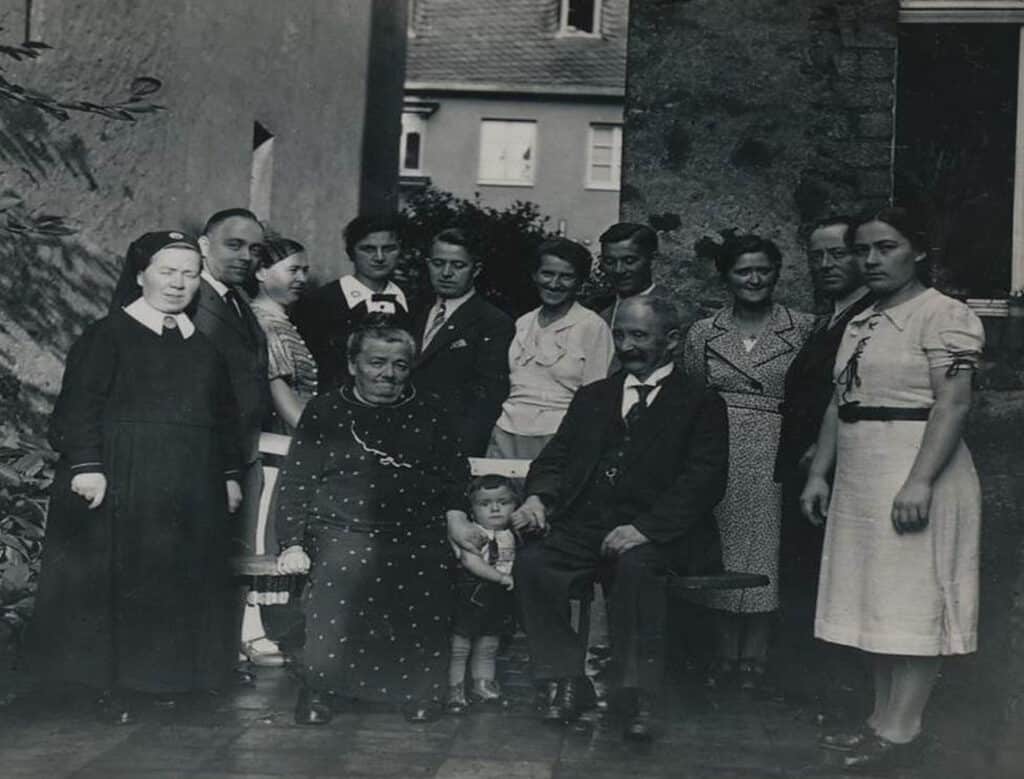
It was Father Kentenich himself who founded the first Schoenstatt group for boys in Engers. There is also a record of this from Sister M. Magda. The boys enthusiastically attended the weekly group meetings. Occasionally, Father Kentenich also visited the members in their family homes, for example in the home of the Kessler family. Three daughters of this family later became Sisters of Mary; all three had met Father Kentenich in Engers.
One of the sons was Karl Kessler, upon whom Sister M. Pia especially draws our attention. His youth was marked by illness, and Father Kentenich listened to him with an open ear. He helped him to cope with his suffering and to mature into a cheerful youth – several photos bear witness to this. He died in Russian captivity in 1944.
Werner Johann Kessler, one of Karl’s nephews, gave a very moving account of the last stage of Karl’s life with excerpts from letters. They reveal the religious depth he had reached.
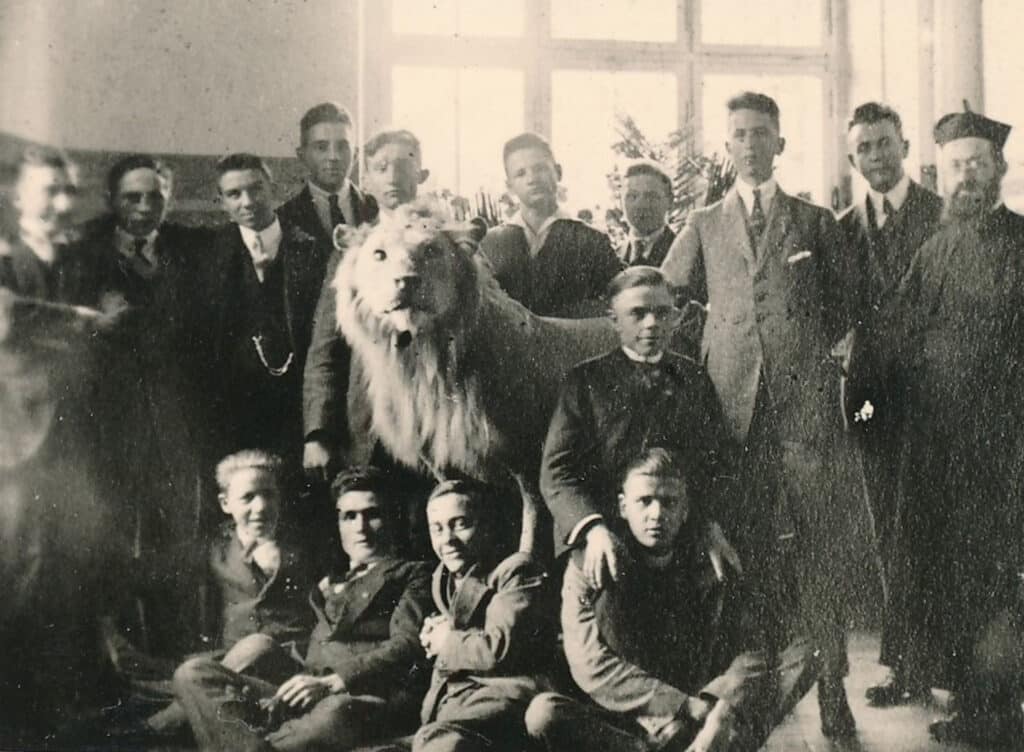
Father Kentenich even expressed the hope – not yet fulfilled – that someone would write a biography of Karl Kessler.
This last and very moving testimony gave rise to a common prayer for persecuted Christians and the song “Protect us with your mantle”. The priests who were present then imparted the evening blessing.
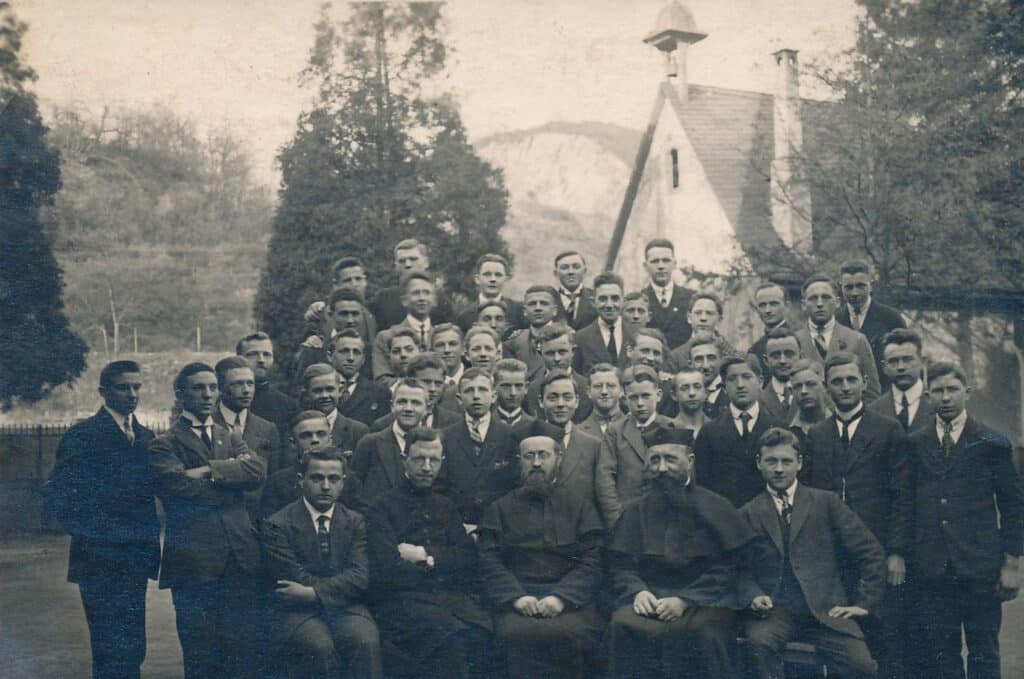
With deep gratitude, thoughtfulness and, at the same time, amazement, we set out on our way home. We received valuable insight into the lives of people who had a profound impact on their lives by meeting Father Kentenich.
How many people might have met Father Kentenich during these four years in Engers! How did he influence their lives?
He can also make an impact on our lives today, bringing about a major change if we, as Schoenstatt Family, follow in his footsteps.
Source: Schoenstatt Sisters of Mary – s-ms.org

